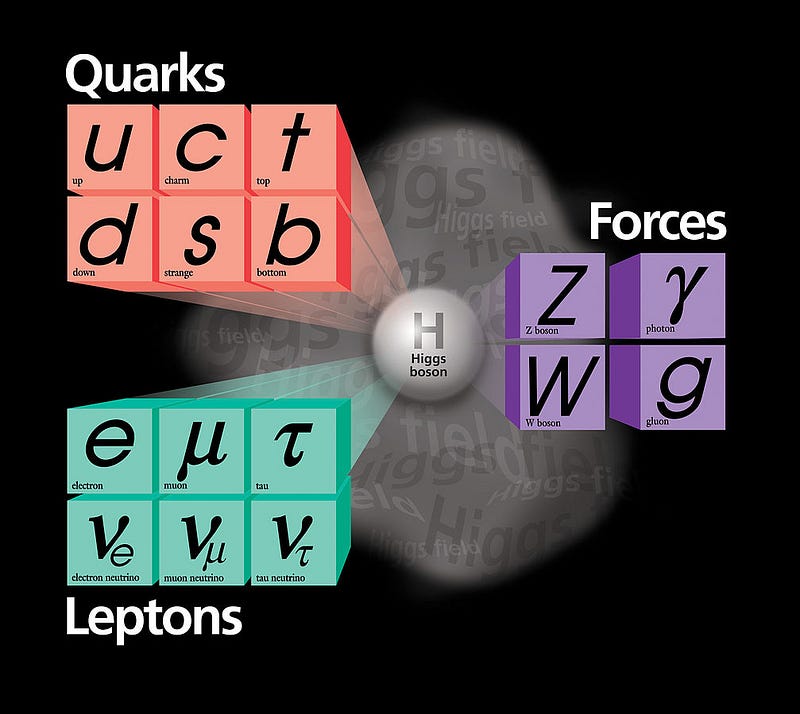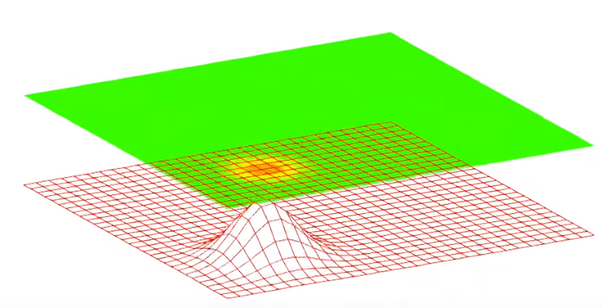Understanding Quantum Field Theory: A Simplified Overview
Written on
Chapter 1: Introduction to Quantum Field Theory
Quantum Field Theory (QFT) is one of the most elegant theories in the realm of quantum physics, yet it remains elusive to many. As Nobel laureate David Gross once remarked, "I had set out to disprove quantum field theory — and the opposite occurred! I was shocked." This statement encapsulates the profound impact of QFT on our understanding of reality.
Traditionally, we learned in school that all matter is composed of tiny particles known as atoms, which possess a concentrated core called the nucleus. The nucleus contains positively charged protons and neutral neutrons, while electrons orbit around it. In higher education, we delve deeper, discovering that protons and neutrons are not fundamental particles; they are composed of quarks. This indicates that the universe is fundamentally made up of quarks and electrons. However, is this perspective entirely accurate?
To grasp the full picture, we must recognize that the universe cannot be reduced solely to electrons and quarks. This traditional model fails to explain the various forces at play and the composition of quarks and electrons. We often gravitate towards discussions around string theory, quantum mechanics, and the multiverse, as these concepts intrigue us. Yet, there is another significant theory that many of us overlook: quantum field theory.

Photo by Zoltan Tasi on Unsplash
To truly comprehend the universe, quantum field theory stands out as a pivotal framework. Its predictions have consistently been validated and it effectively describes a vast array of physical phenomena. Although QFT is often perceived as complex, this article aims to simplify its core concepts.
Before diving into QFT, let’s explore the Standard Model of particle physics. Historically, scientists believed that atoms were the smallest indivisible units of matter. However, this notion evolved as we discovered that atoms themselves consist of smaller subatomic particles: protons, neutrons, and electrons. The introduction of quantum theory in the mid-20th century revealed the existence of additional particles that were previously unknown. To understand these newly theorized particles, scientists developed new frameworks, leading to the classification of elementary particles into a comprehensive model known as the Standard Model of Particle Physics.

Standard Model. Wikimedia Commons Image. Source: Fermilab
The Standard Model categorizes all particles into two main groups: Fermions and Bosons. Fermions, which include quarks and leptons, are the building blocks of matter, while Bosons serve as force carriers. The quark family consists of six varieties: Up, Down, Charm, Strange, Top, and Bottom. These quarks combine to form protons and neutrons, which in turn are categorized into Hadrons, further divided into Mesons and Baryons. Baryons (protons and neutrons) are formed from three quarks, while leptons, such as electrons and neutrinos, exist independently without combining with quarks.
According to Heisenberg's uncertainty principle, certain particles exist in a probabilistic manner without a defined cause; these are known as virtual particles. Despite their peculiar nature, virtual particles adhere to specific patterns, often appearing in pairs consisting of a matter particle and its corresponding antimatter particle. For instance, when an electron forms, a positron (its antimatter counterpart) is created simultaneously. When matter and antimatter collide, they annihilate, resulting in pure energy.
Bosons are classified into four categories: Photons, W/Z bosons, gluons, and gravitons. Prior to the 19th century, scientists perceived electricity and magnetism as separate forces; we now understand them as manifestations of a single electromagnetic force, mediated by photons. The weak nuclear force, responsible for beta decay, is carried by W/Z bosons, while gluons facilitate the strong nuclear force, which binds protons and neutrons in atomic nuclei. Gravitational force, the weakest of the fundamental forces, is hypothesized to be carried by gravitons, although these particles have yet to be observed.
Additionally, the Higgs Boson plays a crucial role in imparting mass to other particles, a topic that will be explored in more depth later.

Now that we've established the role of matter particles and force carriers within the Standard Model, it's essential to highlight the significance of quantum field theory. This theory merges quantum mechanics with field theory, shifting the paradigm from deterministic classical mechanics to probabilistic quantum mechanics. In this context, measurement influences the reality of physical phenomena, and a particle's wave function encompasses all potential outcomes related to its intrinsic properties.
When examining the physical world, one must recognize that what appears to be empty space is, in fact, filled with fields. Consider the repulsive force experienced when attempting to join like poles of a magnet; the space between them is not truly empty; it contains a magnetic field. Similarly, the universe's voids harbor various fields.
As we merge quantum mechanics with field theory, we arrive at quantum field theory, which posits that diverse types of fields exist throughout the universe at all times. Each elementary particle is associated with its own field, such as the Higgs field, electron field, and quark field. These fields are mathematically represented by numbers, with each point in space corresponding to a specific value. Fields can be classified based on the number of values they require for their complete description. For example, the Higgs field is classified as a scalar field, requiring a single value, while electric and magnetic fields are vector fields, needing both magnitude and direction.
The behavior of these fields is dynamic; when energized, they can form ripples, which manifest as particles. For instance, ripples in the electron field produce electrons, while ripples in the quark field yield quarks. As the energy disperses, the corresponding particles can cease to exist. The energy required to generate particles varies across fields, often correlating with the mass of the associated particle.

To illustrate, Higgs bosons are significantly heavier than electrons, necessitating substantial energy for their creation—achievable only in particle accelerators like the Large Hadron Collider.
Understanding how fundamental forces operate through quantum field theory reveals that fields coexist in space and time, facilitating energy exchange between them. This interaction can lead to the transformation of one particle into another, making QFT a powerful theory for comprehending nature at the quantum level. However, many questions remain unanswered, particularly regarding the nature of dark matter and dark energy. Some physicists speculate that dark matter may emerge from energy within fields that remain poorly understood.
Thank you for engaging with this exploration of quantum field theory. If you appreciate this content and wish to support further research, consider becoming a Medium member or buy me a coffee. Stay tuned for more enlightening discussions!
Chapter 2: Visualizing Quantum Field Theory
This brief video provides a quick overview of Quantum Field Theory, summarizing its fundamental concepts and significance in modern physics.
In this video, we simplify the complex ideas surrounding Quantum Field Theory, making it accessible for beginners and those unfamiliar with the topic.